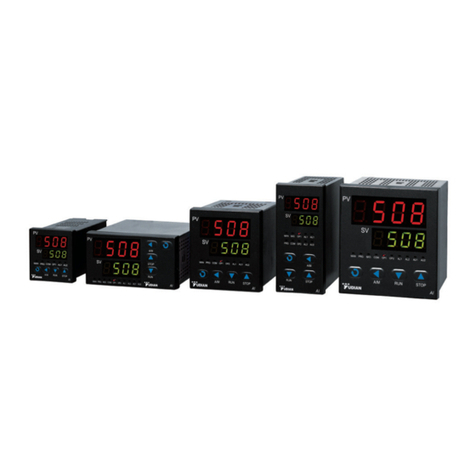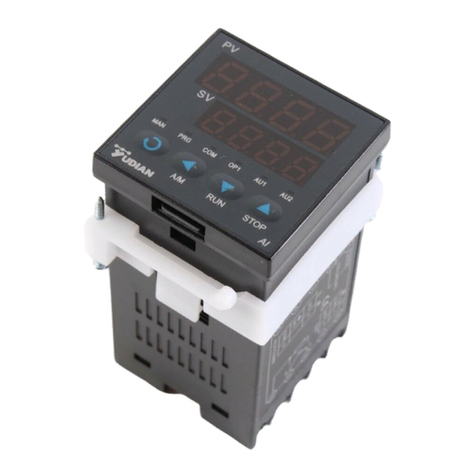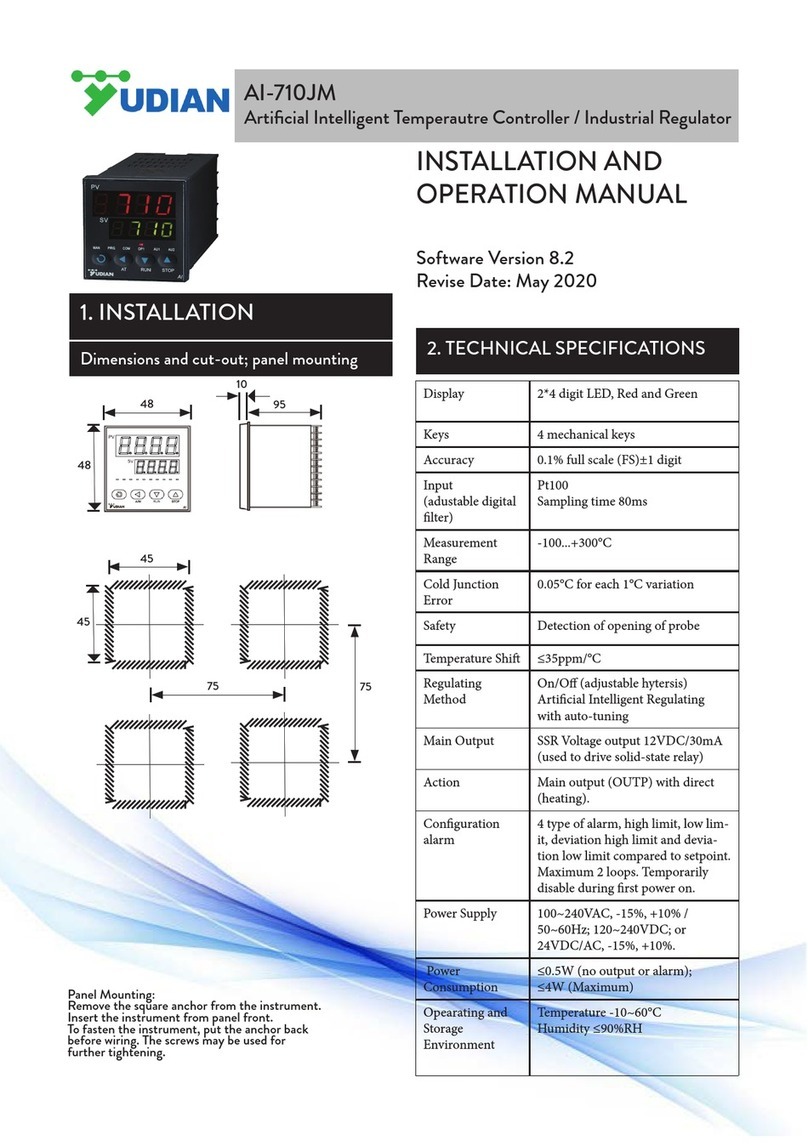
4. DISPLAYS AND OPERATIONS
①Upper display window, displays PV,
parameter code, etc.
②Lower display window, displays SV,
parameter value, channel no. or alarm
code.
③Setup key, for accessing parameter table
and conforming parameter modification.
④Data shift key, or for switching the channel
display in manual/auto.
⑤Data decrease key, and also for displaying
the previous channel.
⑥Data increase key, and also for displaying
the next channel.
Operation Instructions:
1. Switch between channels:
Press to display to the previous channel
Press to display the next channel.
Press can switch between auto multi-channel circulating display status and normal display.
2. Set parameters:
Keep pressing about 2 seconds can access Full Parameter Table (When the parameter lock
“Loc” isn't locked. Loc=808.)
Pressing can go to the next parameter,and pressing 、or can modify a parameter.
Setpoints (SV) can be set by pressing 、or
Press key to decrease the value.
Press key to increase the value.
Press key to move to the digit expected to modify.
Keep pressing or , the speed of decreasing or inscreasing value gets quick. The range of
setpoint is between the parameter SPL and SPH.
Pressing and holding can return to the preceding parameter. Pressing (don't release) and
then press key simultaneously can escape from the parameter table.
When the parameter is locked, pressing can display Field Parameter Table which includes up to
12 parameters selected by user.
The instrument will escape auomatically from the parameter table if no key is pressed within 25
seconds, and the change of the last parameter will not be saved.
3. Alarm display:
The channel number is displayed in the lower display window.
When high or low limit alarm occurs, the first digital on the left side flickeringly displays H or L.
When an input singal is out of range, for example, the thermocouple circuit is break, the upper
window will display the upper limit or lower limit, and the lower window will flicker.

































